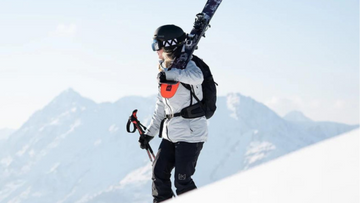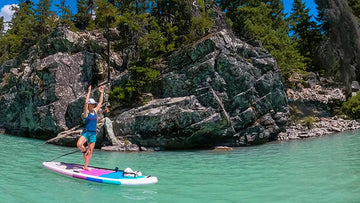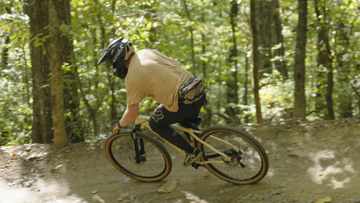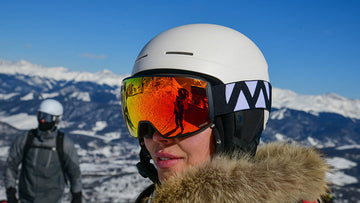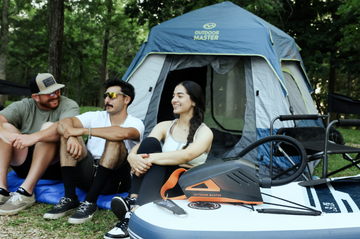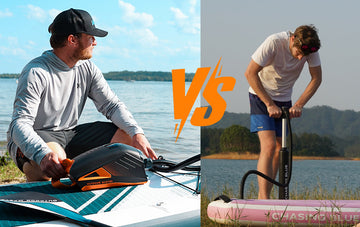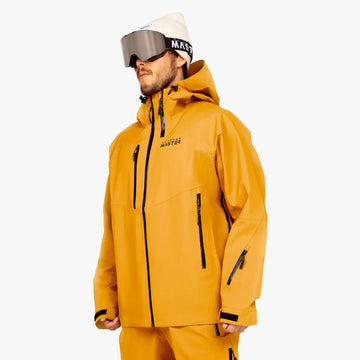
Around 50 million people in the U.S. participate in the winter sport of skiing.
Skiing is also an extreme sport, so the chances of getting injuries also increase. Even the most experienced snow skiers know there is a great danger of suffering skiing injuries when hitting the slopes.
As winter tightens its grip in many areas of the nation, it is showering that brittle white snow on slopes that are beloved by skiers of all ages.
Table of content
What percent of skiers get injured? What are the most 5 common injuries in snowboarding? 1. Head Injuries 2. Wrist injuries and skier's thumb 3. Ankle injury skiing 4. Shoulder skiing injuries 5. Common ski knee injuries What are the leading causes of injuries in snowboarding? Are you following these preventive strategies to get rid of skiing injuries? 6 Way to treat yourself for skiing/snowboarding injuries 1. Banding and strapping 2. Nonsteroidal anti-inflammatory drugs (NSAIDs) 3. The RICE Method 4. EPAT Therapy or shockwave therapy 5. Physical therapy 6. SurgeryWhat percent of skiers and snowboarders get injured?
Skiers have been fatally injured at 69 per 1,000,000 participants over the past ten years. Researchers reported forty-two fatal occurrences during the 2018–19 ski season, most of which involved accidents with other skiers, the snowy ground, or trees.
Researchers at Johns Hopkins recently estimated that about 600,000 people nationally are injured each year as a result of skiing and snowboarding.
From 2009-10 through 2018-19, The National Ski Areas Association reports an average of 38 people died each year while skiing or snowboarding.
Since few of us are physically prepared for the demands that skiing imposes on the body and because injuries in snowboarding are frequent. It is crucial to acknowledge the most common skiing injuries, how to avoid them, and the best course of action for treatment when they eventually happen.
What are the most 5 common injuries in snowboarding?
Skiing can lead to various skiing injuries that can affect different body regions. The risks of snow skiing are widely known, ranging from sprains and strains to broken bones. In addition, more severe brain injuries are well known that can be caused by accidents with other skiers, mountain dangers, or merely a nasty fall. The most common snowboarding injuries are
1. Head Injuries

Courtesy to Kenny Dundorf
Head injuries are one of the most severe skiing injuries, and the most frequent head injuries are blowouts, fractures, and concussions. Anyone on slopes, even the most experienced skiers, is susceptible to unforeseen head injuries, ranging from mild cuts or bump injuries to death-causing trauma.
Therefore, taking as many precautions as possible before, during, and after using the slopes is crucial.
2. Wrist injuries and skier's thumb
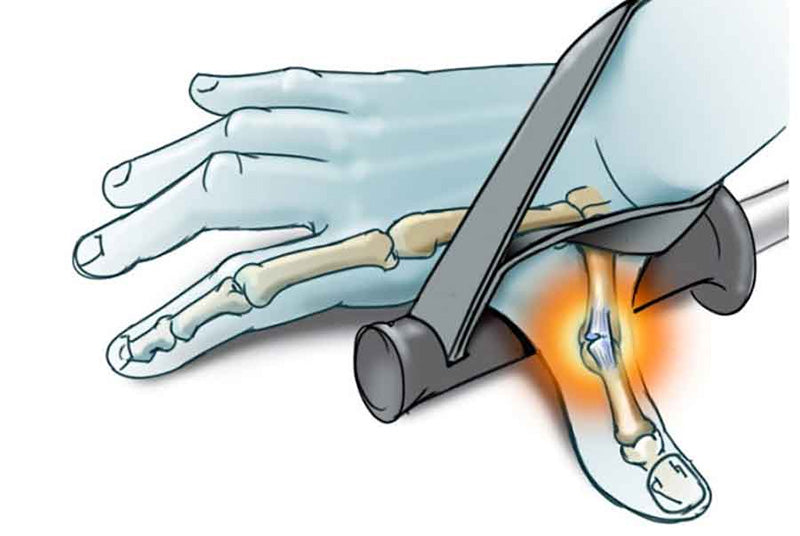
Courtesy to Matthew J. Steffes MD
3. Ankle injury skiing
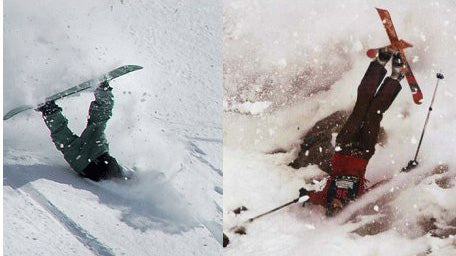
Courtesy to Dr.Elton
Even though ski boots frequently offer good stability and support, it's not always adequate for beginners whose ankles aren't ski-ready. An abrupt, uncomfortable turn made to slow down or stop might easily cause the ankle to roll over to the ground causing skiing injury.
The force of the hit may cause the muscles, tendons, ligaments, and other soft tissue to become inflamed, bruised, and painful to move or touch.
4. Shoulder skiing injuries

Courtesy to THAMES
5. Common ski knee injuries
One in all four skiing injuries involves the knee, making it the most often impacted joint. The ACL and MCL, which connect your thigh bone (femur) to your shin bone (tibia) within the knee joint, are the most often injured knee parts.
Your shinbone's anterior cruciate ligament, or ACL, prevents it from moving forward, and the medial collateral ligament (MCL) stops your femur from swiveling to one side.
Most of the time, the anterior or medial cruciate ligament gets ruptured or sprained. The meniscus of the knee joint's shock-absorbing cartilage cushions is also frequently impacted.
Due to the nature of the activity, skiing frequently results in knee problems. They typically come from your ski catching an unanticipated edge. Your body weight and speed will generate a significant amount of energy through the head of your ski if the binding holding your ski to your ski boot is unable to release.
When your knee is forced to twist due to the length of your ski, severe bone and ligament damage may result. Skiing injuries can also cause fractures of the lower leg and foot.
What are the leading causes of injuries in snowboarding?
Although anyone can suffer skiing injuries, those without formal training are more likely to do so. People aged 35 to 50 and those who borrow rather than own their sporting equipment also pose a higher risk. Some of the causes of injuries in snowboarding are
-
Not doing warm-up
-
Not enough knowledge of skiing
-
Ruined skiing equipment
-
Taking risks
-
Bad body fitness
Are you following these preventive strategies to get rid of skiing injuries?
Skiing is a sport where preparation is vital. The more you plan, the less likely you will get hurt. Here are some recommendations for avoiding skiing injuries:
Skiing within your capabilities: Always stay on the safest line you can handle, whether you have skiing experience. Only advance when you are well-versed and very confident that you can.
Warm-up before skiing: An injury might result from physically pushing yourself too hard with cold or stiff muscles, just like with any exercise. No matter how experienced you are, starting your day with slower runs is a good idea.
Ski instructing lessons: Make sure you enroll in expert ski instruction if you are a beginner or haven't skied in a few seasons. Skiers of all skill levels can benefit from instruction. They can also educate you on how to fall appropriately to lower the danger of damage, which helps with technique and confidence.
Physical fitness: Being physically fit before skiing is crucial for lowering your risk of injury because skiing is a physically demanding activity. Exercises that strengthen your core muscles and condition your body can assist in preventing skiing injury, but it's crucial to follow your doctor's recommendations. Stop working out immediately and consult a medical expert if you feel pain.
Don't take alcohol before skiing: On the slopes, you are more likely to become exhausted and dehydrated. Drinking also increases your risk-taking and carelessness, which increases the likelihood of accidents.
Familiarise yourself with lift usage: Learn to use lifts adequately and don't risk your life with injuries in snowboarding.
Use proper skiing equipment: Your joints can be protected by gear like elbow and knee protectors and wrist guards. It will help if you use a ski helmet to lower your risk of harm.
Make sure your skis are the appropriate length for you, your ability level, and the terrain you plan to ski on if you rent ski equipment.
Use only rental companies that take accurate measurements of you for boots, skis, and poles to avoid chances of getting skiing injuries. If you have your equipment, ensure it is kept in good condition. You can stay warm by dressing in layers of wind-resistant and water-resistant clothes.
Ski only when you are not tired: If you haven't gotten enough sleep or are eager to fit in one extra run at the end of the day, injuries are more likely to occur. Ensure you stay adequately hydrated all day because dehydration can often lead to fatigue, increasing the chances of skiing injuries.
Always keep check of warnings and signs: Avoid deviating from the path or entering hazardous terrain; instead, stay in regions designated as safe. Have a skiing buddy to keep you safe from skiing injuries.
6 Way to treat yourself for skiing/snowboarding injuries
The safest action is to seek medical attention as soon as possible after suffering an accident while skiing if you need it. A qualified specialist should make any medical diagnosis. When necessary, a combination of a thorough examination, x-rays, and MRI scans may be used.
Medical attention can assist in averting potential future harm regardless if you are still on your ski vacation.
1. Banding and strapping
Adding extra tension, proper tape, and strapping can support joints like the wrist or knee, relieving muscle stress and other soft tissue.
Some skiers will tape injury-prone areas to prevent aggravating any troublesome joints in advance. Banding enables skiers with a slight strain to participate in an event or enjoy a day on the slopes.
2. Nonsteroidal anti-inflammatory drugs (NSAIDs)
Nonsteroidal anti-inflammatory medicines (NSAIDs), such as ibuprofen, are over-the-counter pain relievers that can help reduce inflammation and the discomfort associated with injuries in snowboarding.
Depending on the severity of the injury, some skiers may need an IV cortisone and steroid injection to decrease more severe pain and inflammation.
3. The RICE Method
The abbreviation for RICE is Rest, Ice, Compression, and Elevation. In the first 72 hours following an injury, this is particularly important. This conservative method works well for mild tears, strains, or tendonitis difficulties.
The joint will be supported and have fewer movement thanks to a compression bandage or wrap.
Elevate the wounded area above the heart if you can to lessen swelling.
Ice can assist minimize swelling and pain brought on by the injury, while rest provides the wounded area time to heal.
4. EPAT Therapy or shockwave therapy
EPAT is an acronym for Extracorporeal Pulse Activation Technology, also known as shockwave therapy. A non-surgical, FDA-approved method for treating both acute and long-term pain.
The discomfort brought on by heel spurs, Achilles tendonitis, plantar fasciitis, and skiing injuries is frequently treated with it.
A podiatrist uses a hand-held applicator to focus lower frequencies sound waves, commonly referred to as shock waves, towards the wounded area. It directs a unique set of acoustic pressure waves at the area of pain or damage.
Deeply penetrating shock waves speed up the body's natural healing process by promoting blood flow in the soft tissues.
A shockwave therapy machine generates impulse pressure waves delivered sincerely into muscles and tissue to increase blood flow and decrease inflammation during this treatment.
Unlike surgery, there are no scars or infection risks by EPAT/Shockwave Therapy treatments. At the same time, a person can still enjoy skiing without experiencing any performance problems.
5. Physical therapy
Physical therapy (PT) is a medical treatment that seeks to reduce discomfort and improve your ability to move, work, and live. It is a non-surgical, non-invasive, and harmless science that aids in maximizing patients' physical function and bodily movement.
Physical therapy is frequently an excellent approach to strengthen the affected area during rehabilitation and learn the proper form and strategies to prevent further injuries, even skiing injuries.
Physical therapy combined with other forms of rehabilitation, such as shockwave therapy, can shorten the time a skier is off the slopes due to an injury.
6. Surgery
Surgery has longer recovery times, which is unfortunate, in addition to the inherent hazards. It is advised to have a detailed talk with a doctor to ensure it is the best choice.
Surgery is frequently the last option when other more conservative treatment options have failed to heal or repair numerous skiing injuries. Invasive treatments are typically reserved for significant knee Anterior collateral ligament(ACL) or Medial Collateral Ligament (MCL) tears that require repair or for substantial scar tissue that needs to be removed.
Most people don't consider the chances of getting injuries in snowboarding until one happens. To avoid wasting time on the slopes or money spent on a lift ticket, some skiers even carry on after becoming hurt.
Understanding how to avoid some of the most frequent skiing injuries before boarding the lift can benefit.
If any skiing injuries occur, several treatment options described above might enable skiers to spend less time in the ski lodge and more time on the slopes.


